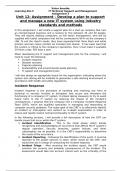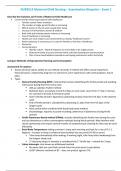Essay
Unit 12 IT Technical Support and Management Assignment 3 (Learning Aim C) Distinction
- Institution
- PEARSON (PEARSON)
UNIT 12 IT TECHNICAL SUPPORT AND MANGEMENT, COVERS ALL CRITERIA DISTINCTION LELVE ASSIGNMENT Learning aim C: Develop a plan to support and manage a new IT system using industry standards and methods C.P5 Produce an IT support and management plan that adequately meets most of the client�...
[Show more]












